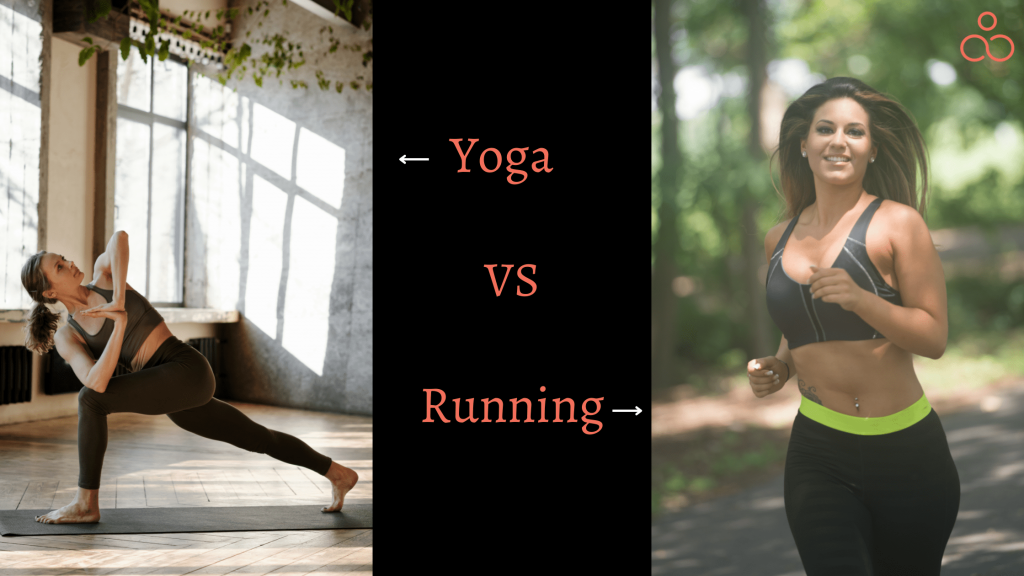I have been through a life full of ups and downs, which affected my health badly. I tried a lot of crash diets, gym, and whatnot to get back in shape and maintain healthy body weight. However, everything seemed to fail, and I somehow became comfortable between Yoga and running. Now comes the billion-dollar question, Yoga vs. running; which one is the best? Can I do both? What is the difference? And so on. If you are someone like me, you will find all your answers in the sections below!
Running – Pros and Cons
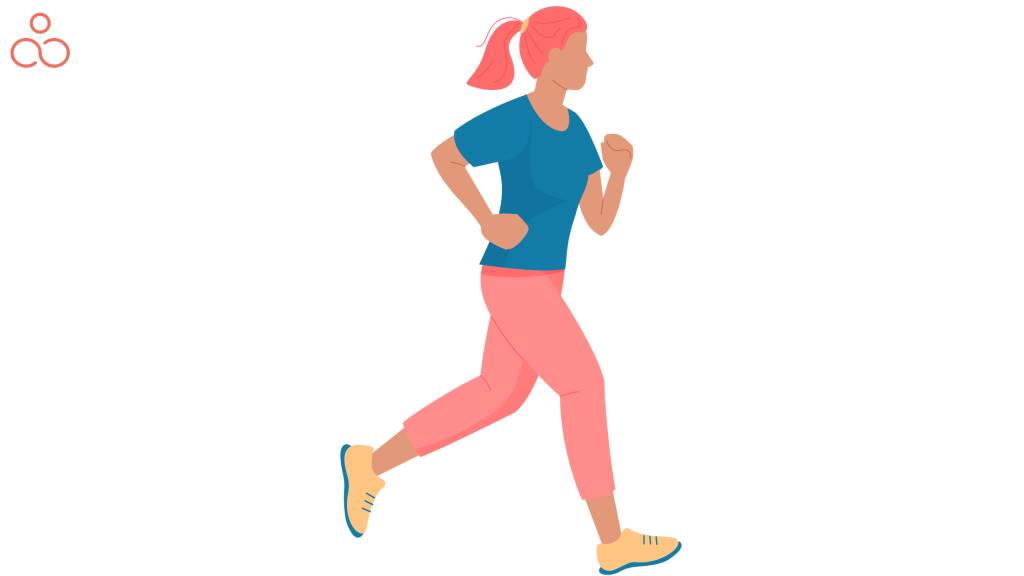
Running is a great sport; all you need is sports attire, a clock, a good pair of running shoes, and a place to run. That’s it, and you are all set to go. Running is beneficial for health as it enables you to burn many more calories quickly. It is not about running fast every time; jogging leisurely is much more acceptable. It’s strongly recommended to train for a longer race, such as a half marathon.
Pros
- It’s a simple approach to shedding pounds.
- It does not require heavy investment in gear
- You may run whenever and anywhere you want (a little rain or snow must not deter you)
Cons
- It might take a long time to get into shape if you’ve never run.
- The weather could sometimes affect your consistency
- The ankles and legs could get real sore
- Expert trainers are costly
Yoga – Pros and Cons
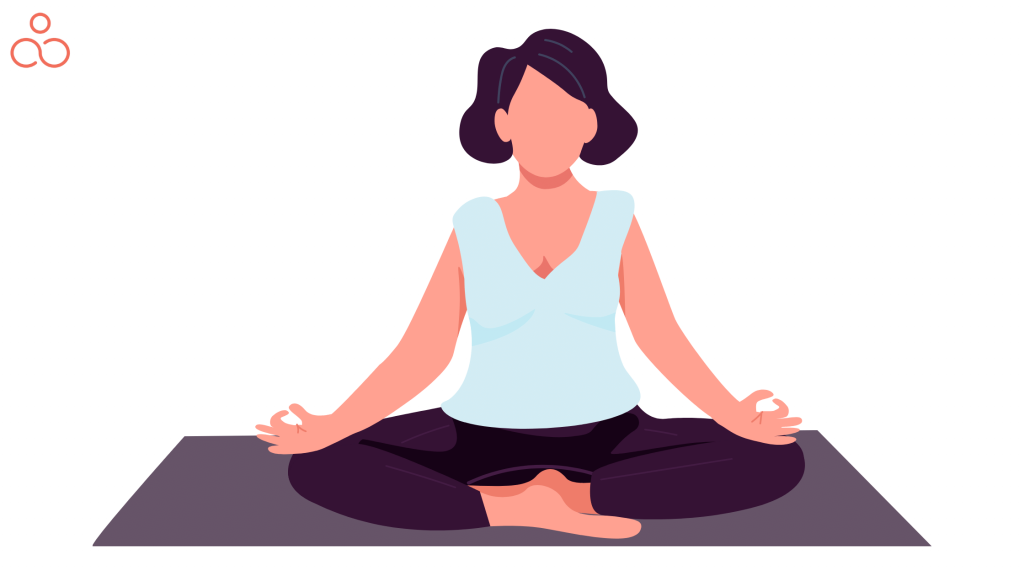
Yoga has similar fitness advantages as jogging, although the effects may take longer to observe. Yoga ensures a total-body workout to help you calm your body and mind. You don’t need much more than a mat, comfy clothing, and a peaceful place to practice. Yoga aids in the development of strength and flexibility. Certain yoga poses, for example, are proven to help reduce joint discomfort and strengthen the muscles. The benefits of Yoga are sure to outweigh the number of cons.
Pros
- Improves overall physical health
- Alleviates pain
- Regulates blood pressure
- Lowers stress and anxiety
- Strengthens the body
- Promotes mental clarity
- It does not need a lot of room or equipment
- Can train at your convenience
Cons
- You’ll need a trainer or teacher (or an app) to learn fundamental postures.
- When compared to running, it often does not burn as many calories.
- It could be boring if you are looking for high-intensity workouts.
Yoga vs Running – Similarities and Differences

Yoga and running are both excellent for your heart and physical well-being. Both exercises are gradual and steady ways to get in shape and lose weight. Running burns calories, but Yoga’s benefits last longer and boost mental ability. So, what is it that is similar? And, what is it that is different?
Similarities
Breathing Strength and Control
Yoga and running both emphasize the importance of breathing. Pranayama is a yogic technique of breathing that focuses on equal durations and rhythmic deep and long breaths. Meditation through Ujjayi Pranayama focuses on deep breathing, reduces anxiety, diverts attention, and soothes the mind and body.
Running also necessitates inhaling and helps manage heart rate whenever you inhale in through your nose and out through your mouth. Even if you’re at rest after a run, it is critical to maintaining a constant breathing pattern to keep your heart rate stable.
It is well-known that focusing solely on breathing prevents distracting thoughts and sensations from entering your mind. Yoga breathing exercises will help you quiet your mind, reduce tension, and, most significantly, stretch your breath for extended periods, which will benefit your running experience too!
Muscle Strength
Any exercise can help you strengthen and train your body muscles. Similarly, Yoga and running help improve endurance, which in turn helps reduce injuries. Exercises that strengthen the hips are beneficial, and Yoga promotes hip muscle strengthening and enhances agility and flexion. On the other hand, running results in a fit physique and fluidity in movements. Strong muscles and hip joints benefit everyone who spends most of their time sitting, not just runners. Yoga practice also shapes the core strength essential for running.
Mental Strength
It might be challenging to practice Yoga and run consecutively. It is hard to sit in one place and hold the poses for a long time. Repeating the same movements over and again can get tedious, which is why many individuals become bored during Yoga sessions. But, running over an extended time across a vast distance may be demoralizing for some. Your tenacity and attention improve with each day of running or Yoga. It also trains you to take advantage of every chance that life presents. Yoga has several techniques to help you release tension and anxiety and calm your inner self.
Diet
To maintain good health, you must consume a well-balanced meal regularly and adhere to a strict daily regimen. One of the most crucial things is maintaining a healthy weight; heart disease and high blood pressure are all caused by excess weight. Many people believe that eating right and moving less may lose weight. However, calorie-burning is a requirement that cannot be achieved without adequate activity. When diet and exercise are coupled, a positive result is obtained, whether running or Yoga.
Differences
Weight Loss
Running aids in the faster burning of calories, leading to a quicker weight loss. While running might help you attain your weight-loss goals quicker, Yoga is a more consistent approach with a longer-term benefit. Running is an excellent option if you need to lose weight quickly. However, you cannot run continuously throughout the day. Yoga increases metabolic rate, which aids in calorie burning throughout the day.
Building Muscle Strength
Several yoga exercises build muscle strength in the body, bringing flexibility and a high range of motion. Running results in a fit body and slimmer physique, enabling movement easier. But strong hip and leg joints and muscles are necessary for a successful run, shaped by the daily yoga practice.
Flexibility Training
Running does help you become in shape and make you more flexible. On the other hand, regular yoga practices help to build muscle strength. Different yoga exercises assist in freeing up tight muscles and joints, resulting in increased flexibility and endurance in your body.
Mental Health in Good Shape
Being well does not just imply being physically fit; it also entails having a fresh and healthy mental state. Yoga is a practice that impacts a person’s physical, mental, and spiritual well-being. A daily yoga session of 30-40 minutes can help settle your body, mind, and spirit and create inner peace.
It relieves tension and anxiety, heals depression (slowly), and keeps unwanted thoughts at bay. As a result, you receive a good night’s sleep, which is critical for good health. A quiet and serene mind, on the other hand, leads to a better running experience. Running is also a stress reliever and mood enhancer. Running with a stress-free mind allows you to focus more on your breathing, which helps you avoid negativity.
Which Burns More Calories? Running or Yoga?
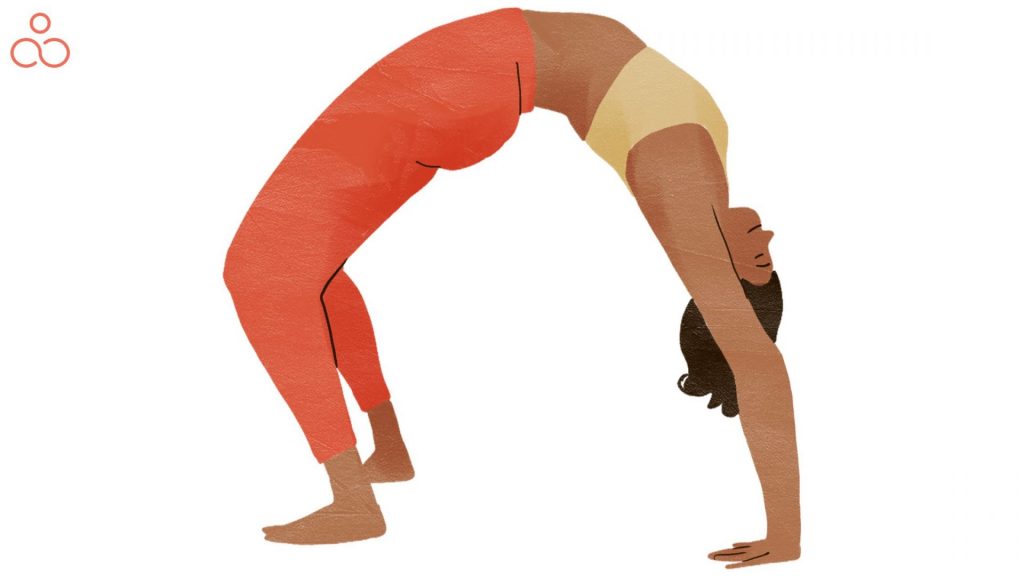
Yoga and running can both assist you in staying fit and reaching your goals. A hard run will frequently help you burn more calories than Yoga. As a result, running is a superior alternative for losing weight. On the other hand, a hard run is more stressful on the body since you’re continually striking the ground with your feet. It also takes time for newbie runners to develop the endurance and strength necessary to run distances more significant than a few miles.
Depending on the practice, Yoga may be a rejuvenating exercise that detoxifies the body and relaxes the mind. It can also be used for intense exercises, such as Hot Yoga. On the other hand, yoga loses the sense of emancipation that comes with intense running. And, as far as I’m aware, there are no yoga contests to participate in!
Hot Yoga vs. Running

Hot Yoga differs from regular Yoga in a few ways.
Hot Yoga, unlike regular Yoga, is done in a setting with a greater temperature. It occurs in warm, humid environments, resulting in profuse perspiration. When compared to regular Yoga, hot Yoga has a more intense effect. Usual hot yoga practice will significantly lose weight in a short period. Aside from increasing the body’s metabolic rate, it also causes profound heat sweating.
The most significant difference between hot yoga and running is how many calories you can burn in a certain amount of time. Hot Yoga, even if it isn’t as hot as Bikram yoga, burns more calories than a kilometer of running.
According to studies, a 160-pound person may burn up to 560 calories (for males) and 330 calories (for women) in a 90-minute hot yoga session. During 90 minutes of vigorous running, a 150-pound person will have burned around 240 calories.
Overall, it’s important to remember that both sorts of activities can help you lose weight. Nonetheless, hot Yoga and running have a lot in common. The following are some of the parallels between the two activities:
- Both aid in respiratory control, concentration, and endurance.
- Both exercises can help you control your heart rate and enhance your heart function.
- Running and hot Yoga both assist in building bones and muscles.
- Both activities help you increase your mental fitness, focus, and endurance.
- Running and hot Yoga are two excellent and natural strategies to lose weight.
Hatha Yoga vs. Running

While the benefits of Yoga and running are similar, the degree and kind of impact differ. Let’s see how running and yoga stack up against one other in the following categories:
Weight Loss: Running or Yoga in the early is a terrific alternative if you seek a natural and efficient way to lose weight quickly. Yoga and running boost the body’s metabolic rate of energy. As a result, the body is compelled to transform stored fat and calories into helpful energy. Both workouts employ the same approach, which is quite effective. The only variation is the calorie burn rate.
Compared to traditional Yoga, running burns more calories per unit of time. Traditional Yoga, on the other hand, provides a long-term benefit. However, hot yoga can help you lose weight at a similar rate as running.
Breathing Control: One of the major principles behind the efficacy of running and Yoga is breathing. These techniques involve breathing exercises and using deep, long breaths to strengthen the respiratory system. Running can assist you in learning how to enhance your breathing efficiently, but Yoga is excellent for controlling your breathing. Running necessitates quick breathing, but Yoga necessitates slow breathing. Running, especially high-intensity running, necessitates deep inhalation and exhalation. Because it is more effective, it pushes you to inhale through your mouth. Yoga teaches you how to focus and hold your breath. Many yoga poses require you to retain your breath for some time before profoundly inhaling or exhaling.
Individual Preferences Vary!
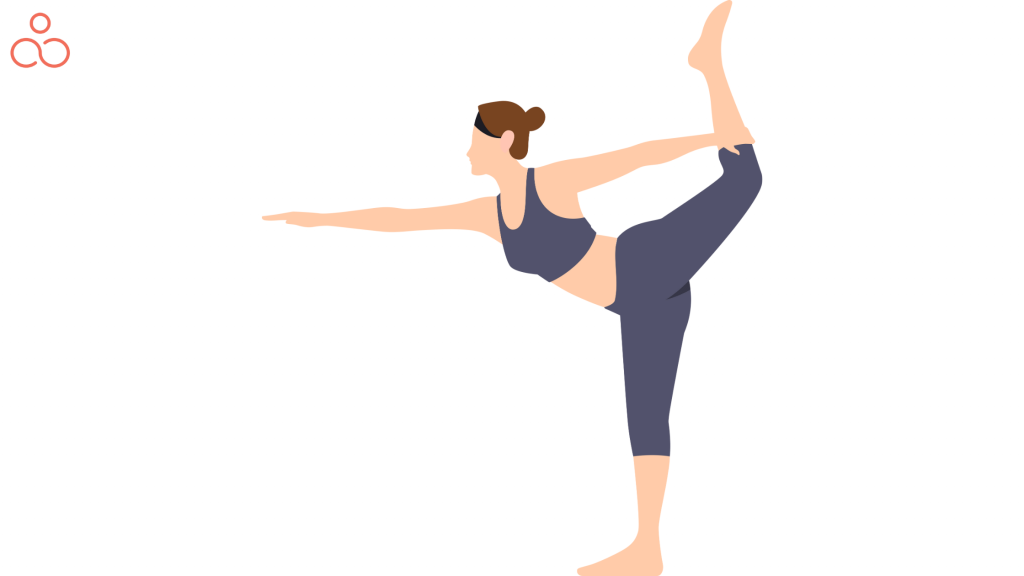
You may know that not everyone appreciates the same stuff on the same day. People who aspire to live a healthy life recognize the need to exercise regularly. On the other hand, someone else might be so much into a sedentary lifestyle that they might even dislike changing their clothes and venturing out on a regular schedule. Instead, they prefer to remain at home and practice yoga for 40 minutes daily. Someone else might prefer some fresh air instead of performing asanas at home so that he could go for a run. Some might even like to combine both forms to bring a balance to their workout. It all boils down to individual choices.
However, studies conducted on intensity and energy expended by participants for research on aerobic aspects of Yoga concluded that Yoga is more efficient in enhancing strength and flexibility and cannot replace running.
Though some forms of Yoga, such as Bikram yoga, have proven to give a better MET (metabolic equivalent of task, is the amount of energy that you use while you silently sitting) score, they could only reach moderate cardiovascular benefits. In simple terms, if the MET score is 1, it is mainly considered sedentary. A MET score of 2 to 3 is considered a light activity, and anything between 3 to 6 is moderate. Another study by Larson-Meyer for vigorous Surya Namaskar resulted in a MET score of 7.4, which could average 12-15 minutes per mile of a walk and jog combination.
It is always your decision! Do you understand why having a choice is so important? When you make your own decisions, you are more likely to be satisfied with them, and when you are happy, you are more likely to accomplish things well.
5 Post-Run Stretches to Cool Down
Utthan Pristhasana – Lizard Pose
You can start from the Bharmanasana (Table Top Pose) or you can start from the Phalakasana (Plank Pose). Bring your right leg outside of your right hand and try to press your hips down. Should the stretch feel very intense on your thighs then place your back knees on the mat.
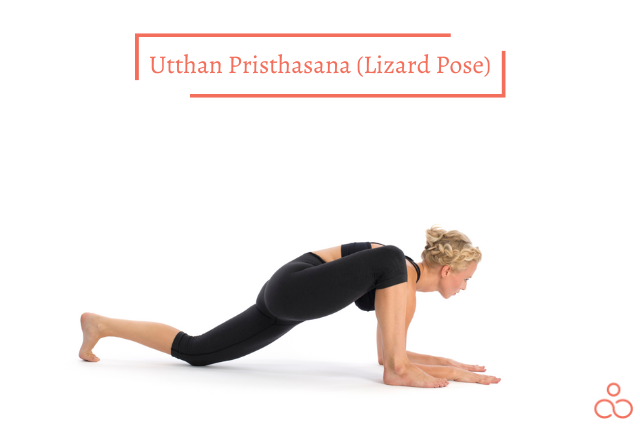
Eka Pada Rajakapotasana – Pigeon Pose
Start from Phalakasana (Plank Pose) or Adho Mukha Svanasana (Downward Facing Dog). Bring your right knee closer to your right wrist, your right toes closer to your left wrist and slowly sit down. Try to bring your left thigh closer to your mat. Should the stretch be too intense, bring your right toes closer to your left thighs. Your knee, which should be resting on the ground, is making a 90 degree angle so that the stretch will intensify.
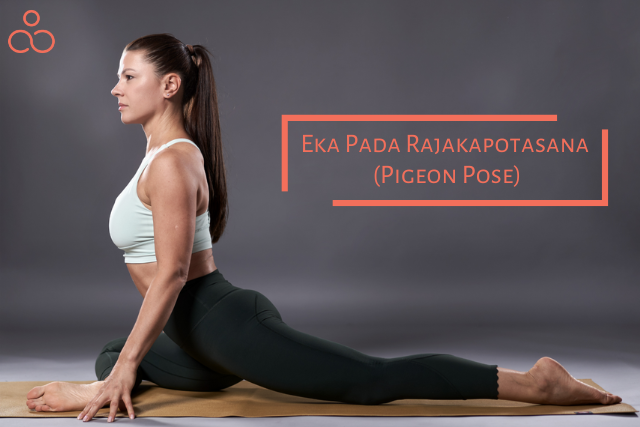
Baddha Konasana – Butterfly Pose or Cobbler’s Pose
Sit in Dandasana, stretching your legs in front of you and bring the soles of your feet together. Bring your heels closer to your body in the direction of your crotch. Start moving your knees up and down slowly or bring your chin/nose closer to the toes to feel a good relaxing stretch around your hips.

Apanasana – Knees to Chest Pose
Lay comfortably on your back, bend your knees and bring them closer to your chest. Hug them and stay in that pose for a few breaths. You can lift your head and bring your nose or forehead closer to your knees if you wish. But it is totally fine if you want to rest your head on your mat.

FAQ
Which method supports healthy weight loss? Yoga or Running?
Running and Yoga are effective, but doing both as complementary workouts is much better. Running will assist you in reaching your weight-loss goal more quickly. Yoga, however, can help with weight loss but at a slower rate. So, running is a better option if you want to reduce weight quickly.
Is Yoga able to help you regain your running speed?
Yoga will maintain your body health and keep you fit until you can resume running. It can be employed to augment your regular workout regimen. It’s a great tool when running or doing other cardiovascular exercises because it can help you relax, quiet down, and promote healing in your thigh muscles.
Is Yoga more calorie-burning than running?
Yoga burns fewer calories per minute than running. Calorie counting is a slow but systematic process throughout the day, unlike running, where the calorie burn stops after you are done with your run. Yoga has the added benefit of having a far more substantial impact than a workout session.
Is it good to go for a run and do yoga on the same day?
You may run and perform Yoga on the same day. You’ve arrived at the right proximity if you wish to mix Yoga with jogging. It merely takes proper planning and dedication. It will also have more benefits, such as increased calorie burn. Running will help you build muscle strength, whereas Yoga will help you improve your flexibility and balance. Both therapies can be pursued on the same day but necessitate meticulous planning. Warming up with Yoga before running is a fantastic idea as it will gradually warm up your muscles before incorporating them into high-intensity activities. Cool-down post-run stretches could also help supply the muscles and reduce the chance of injuries.
Conclusion
Running and Yoga both have a lot in common. To decide which is better depends on the demands and preferences you might have. Running is suitable for building physical strength, while Yoga is good for improving balance and coordination. Yoga has long-lasting effects when compared to running. However, we would suggest and recommend you practice both these fitness techniques in combination to achieve the best results!

